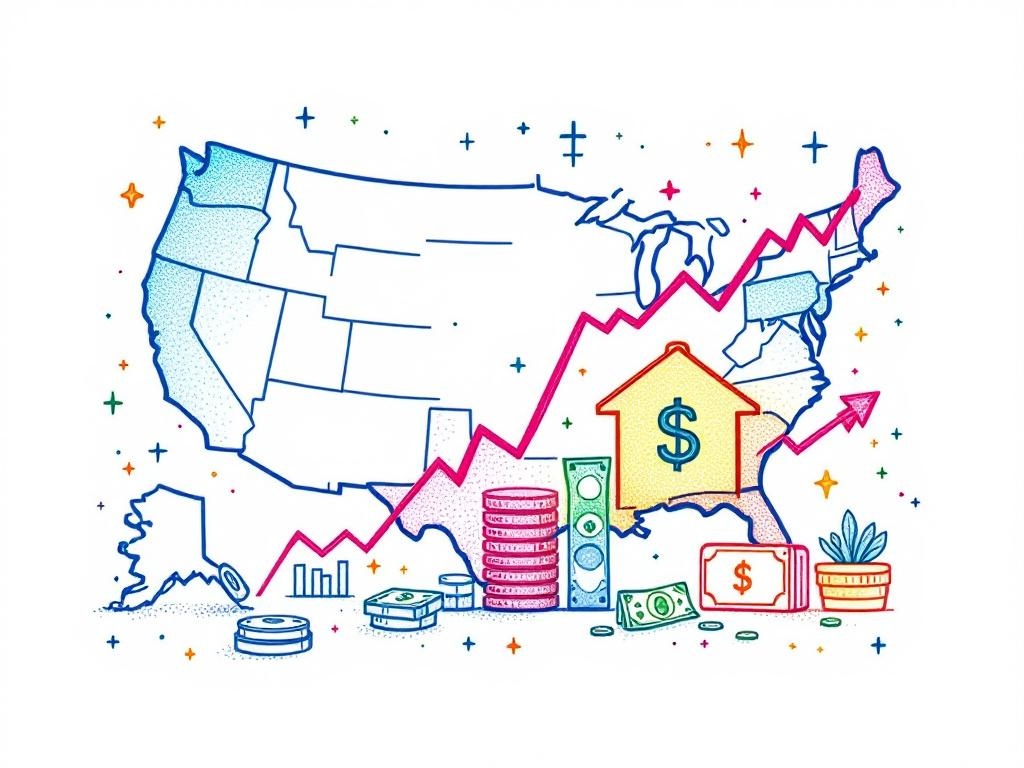Deloitte's US Economic Forecast Outlines Potential Scenarios for Q2 2025

New York, Thursday, 26 June 2025.
Deloitte’s analysis highlights three possible future economic paths for the US, influenced by court rulings, tariffs, and monetary policies, amidst ongoing inflation concerns and fluctuating treasury yields.
Inflation, Tariffs, and the Federal Reserve’s Response
As the United States grapples with ongoing inflation concerns, the Federal Reserve’s monetary policy continues to be a focal point. The 10-year treasury yield is predicted to stay around 4.5% for the remainder of 2025, despite a 50-basis-point interest rate cut from the Fed expected in the fourth quarter of this year. By 2027, the yield is projected to decline to 4.1% and to remain stable through 2029 [1]. The core Personal Consumption Expenditures (PCE) price deflator, an important measure of inflation, is anticipated to increase to 3.6% year-over-year by the last quarter of 2025. This inflationary scenario, exacerbated by tariffs, is compelling the Fed to cautiously reduce rates, slowly bringing the federal funds rate down to between 3% and 3.25% by the first quarter of 2027 [1].
Tariffs Impact on Trade and Employment
Tariffs have played a significant role in shaping the economic forecast, with average rates expected to remain around 15% during the period, but with notable variations across different regions and products. For instance, tariffs on imports from Canada and Mexico are predicted to decrease to approximately 3% by next year, while tariffs on Chinese imports are projected to hover at 50% [1]. These trade barriers are anticipated to slow the pace of international trade, notably causing a drop in real imports of goods and services by 7.1%, which could ripple through various economic sectors and affect employment levels [1]. Indeed, the unemployment rate is forecasted to rise to 4.6% in 2026, driven by elevated interest rates and tariff-induced costs impacting investments and hiring [1].
Monetary and Fiscal Policy Adjustments
Fiscal policies are evolving in response to the economic challenges. The Tax Cuts and Jobs Act (TCJA), scheduled to expire at the end of 2025, is likely to be extended, shielding against a tax increase in 2026. This extension is accompanied by additional tax cuts incorporated in the final budget bill, aimed at stabilizing fiscal conditions [1]. Furthermore, federal spending is anticipated to decrease in 2026 and 2027, posing a drag on economic growth [1]. Meanwhile, the Federal Reserve’s decision to cut rates by 50 basis points in Q4 2025 and potentially further reductions in 2026 is indicative of a strategy to maintain economic stability amidst these fiscal dynamics [1].
Economic Growth and Consumer Confidence
Despite these challenges, the forecast for real GDP growth remains moderate, with expectations at 1.4% for 2025 and 1.5% for 2026. A more robust growth period is anticipated in 2027 and 2028 [1]. However, consumer confidence has recently shown signs of weakening, exemplified by the Conference Board Consumer Confidence Index, which fell significantly in June 2025. This decline reflects broader concerns over job availability and economic conditions, despite slight improvements in stock price outlooks. As consumer sentiment often precedes broader economic trends, these indicators suggest caution as businesses and policymakers navigate the upcoming quarters [2].